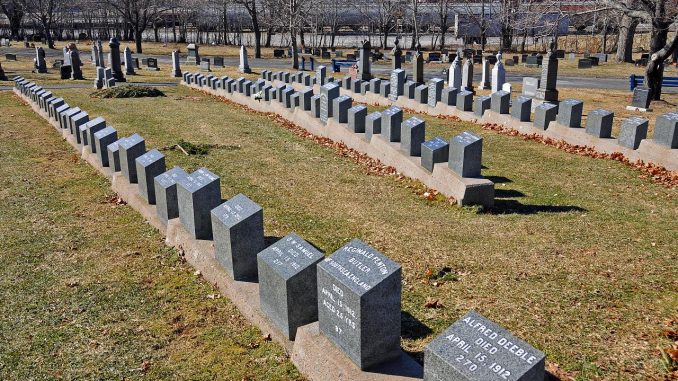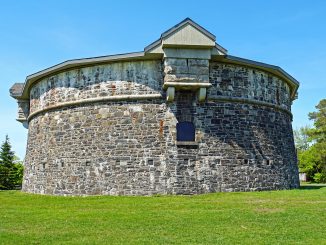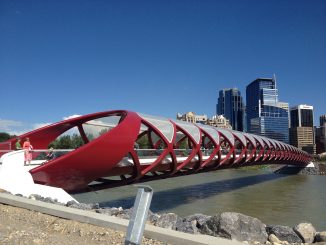
When RMS Titanic began her journey to New York, USA from Southampton, England on 10, April 1912, nobody onboard believed their ill-fated story would end in Halifax, Nova Scotia of all places. It was here however that many of the dead were brought ashore and where their bodies would spend the rest of time. The Fairview Lawn Cemetery in Halifax, Nova Scotia serves as the final resting place for 121 victims of the Titanic. The headstones were paid for by the White Star Line, owners of the Titanic. Annual upkeep of the Titanic graves was paid for by the White Star Line until 1930 when a trust was established for their perpetual care.
The majority of headstones are simple, small black-granite grave markers with bevelled tops and the inscription ‘Died April 15, 1912’ and the number assigned to the victim when their body was recovered from the cold Atlantic Ocean. The Titanic victims buried at Fairview Lawn represent all of those aboard the Titanic from first class passenger William Henry Harrison, to third-class Swedish emigrant Alma Pålsson who was traveling with her four children. Additional inscriptions, other than the simple date and number were applied to graves where the victim was identified were paid for by families and friends.
A grave marked ‘Unknown Child’ is one of the more touching memorials and serves as a constant reminder that the tragic accident affected all those on board without discrimination. The unknown child was identified as 19-month-old Sidney Leslie Goodwin in 2007 using DNA-testing. The entire Goodwin family eight lost their lives that day.
Titanic Grave Markers Facts
- The Halifax Titanic Graves Trust Fund at the Halifax Regional Municipality accepts donations for the upkeep of the graves the Titanic graves.
- The graves four line arrangement was designed and commissioned by the White Star Line from surveyor F.W. Christie.
- On Sunday, 14 April, at 11:40 pm the Titanic fatefully struck the giant iceberg and by 2:20 am in the morning, just a few hours later, she was gone.
- the Cunard Liner RMS Carpathia was the first ship to arrive at the scene and she was able to rescue more than 700 people from the frigid waters.
- The coffins of the unidentified victims were adorned with bouquets of lilies donated by local individuals and businesses wishing to express their sympathy.


